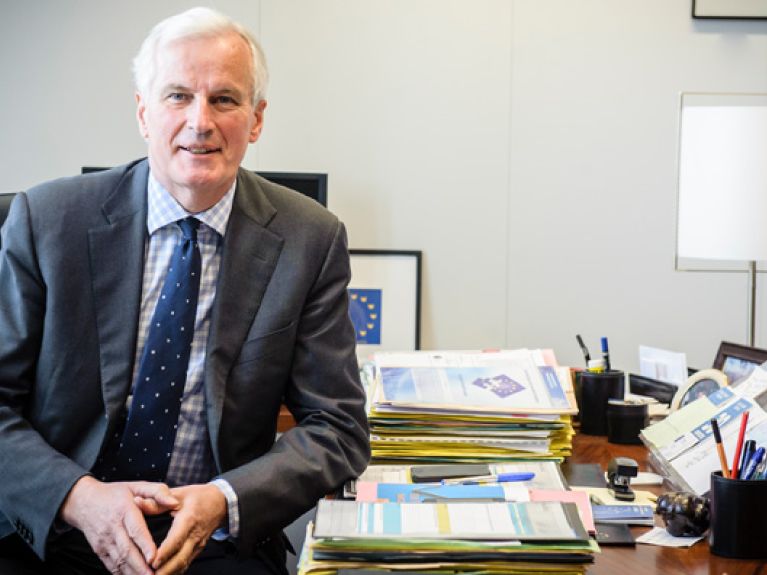“Progress in record time”
The Banking Union as a way out of the financial and debt crisis: an interview with Michel Barnier, European Commissioner for Internal Market and Services.

Mr. Barnier, before taking control of bank supervision the European Central Bank has started subjecting the 128 largest banks in the Euro area to a stress test. What is your feeling when pursuing your ideas on a banking union? Does more transparency also foster more trust?
The first pillar of the Banking Union is the Single Supervisory Mechanism (SSM), with the European Central Bank (ECB) at its centre. The SSM Regulation entered into force in early November and will be fully operational next year. In the meantime, a complete assessment of the banks’ health is being conducted. Full transparency must accompany this exercise, as this is key to strengthening the credibility of European banks and the confidence of both the private sector and of citizens. What is new is that the ECB, the body, which will carry out the assessment is the one that will be responsible for enforcing the conclusions and follow-up actions resulting from the assessment. This would not have been possible without a banking union. That said, Europe’s banks are in a much better place today than they were two years ago. They have raised substantial amounts of capital on the markets, so that levels of capital for big European banks are now equivalent to American banks.
It is as yet unclear what the next steps to a banking union will be, such as the possible restoration or winding down of decrepit credit institutes or ensuring the security of deposits. What steps or rather what decisions are now pending? And over what periods?
The Banking Union is a cornerstone of the strengthened Economic and Monetary Union and ensures that a stable banking sector serves the needs of the real economy in the euro area. The SSM, its first pillar will already make a very big difference. But better supervision alone is not enough. A banking union also requires action to restructure non-viable banks when necessary with minimal costs to taxpayers and the economy. This is what a single resolution mechanism (SRM) based on a single board and a single resolution are about. We are now taking forward discussions with the Council of Ministers and European Parliament on our SRM proposal, which the European Council wants to see definitively adopted by next year’s European elections. We have already made enormous progress in record time. But we must keep up the momentum and now finalise negotiation. There is no time to lose.
The idea of a banking union is so persuasive precisely because it will help free the decrepit banks in countries in crisis from the vicious circle they are in. Leading German economists say this is “collective liability for the debts of the Euro system banks”. How would you counter this argument?
The financial crisis took a new turn with the eurozone debt crisis: it highlighted the potentially vicious circle between banks and sovereigns. The only way to break the link is a deeper economic integration with a banking union ensuring a better supervision and regulation of the banks of countries sharing the same currency. The reinforced coordination also features a common financial backstop: the ESM which may grant loans under strict conditionality. For instance, the Spanish financial sector programme benefited from ESM loans, via the Spanish state, in exchange for deep restructuring commitments and only after the bill was first footed via private solutions and internal resources (i.e. a full contribution from the banks’ shareholders and junior bondholders). We are also working on the possibility for the ESM, to recapitalise banks directly, without its loans adding to the debt burden of countries in order to break the link between bank and sovereign.
In the case of winding a bank down, you intend “to keep the cost to the taxpayer low”. How effectively will the liability cascade function here? And how great is the probability that the tax payer will have to step up to the plate after all?
I trust that once a robust financial framework is fully operational, including stronger prudential requirements, supervision, better governance and the ability to resolve banks in an orderly fashion including bail-in, recourse to public money will be very rare. Before this complete regulatory framework is in place, we cannot exclude that public money will be requested as a last resort. But we already have rules in place which protect the taxpayers: the revised rules on state aid are applicable, which implies that any use of public funds would be preceded by a “light” bail-in – The bank and its capital holders and junior creditors would have to contribute to a maximum extent before public aid is given. ▪

